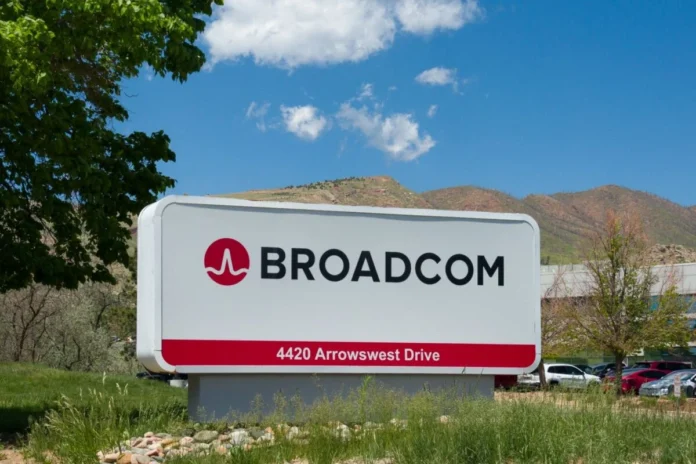Broadcom Inc. (AVGO) saw its stock rise sharply after reporting robust third-quarter fiscal 2025 results. The shares closed at $306.10, up 1.23% for the day, before climbing 4.38% to $319.50 in after-hours trading following the earnings release.
The company’s performance highlights growing demand in AI semiconductors, networking hardware, and enterprise software solutions.
Q3 Financial Highlights
Broadcom posted $15.95 billion in revenue, a 22% increase from $13.07 billion a year earlier. GAAP net income rebounded to $4.14 billion from a $1.88 billion loss in the same quarter last year. Non-GAAP net income rose 37% to $8.40 billion, while adjusted EBITDA grew 30% to $10.70 billion.
Earnings per share showed strong improvement, with GAAP diluted EPS at $0.85 and non-GAAP diluted EPS at $1.69. Free cash flow hit a record $7.02 billion, up 47% from $4.79 billion, and operating cash flow reached $7.17 billion, supported by disciplined capital spending of just $142 million. The company held $10.72 billion in cash at quarter-end and returned $2.79 billion to shareholders through dividends.
AI Semiconductors Lead Growth
Revenue from Broadcom’s semiconductor segment jumped 26% to $9.17 billion, driven by strong AI accelerator demand, now accounting for 57% of total revenue. AI-related semiconductor sales soared 63% year-over-year to $5.2 billion.
The infrastructure software segment grew 17% to $6.79 billion, aided by the VMware integration and increasing enterprise adoption of software solutions. CEO Hock Tan projected Q4 AI semiconductor revenue of $6.2 billion, marking eleven consecutive quarters of growth in this area.
Outlook and Guidance
For Q4 fiscal 2025, Broadcom expects revenue of around $17.4 billion, a 24% increase from last year, with adjusted EBITDA margins steady at 67%. The board declared a quarterly cash dividend of $0.59 per share, payable September 30, 2025.
With strong results and optimistic guidance, Broadcom appears well-positioned to benefit from continued AI infrastructure expansion and enterprise software demand, driving post-market investor enthusiasm.




